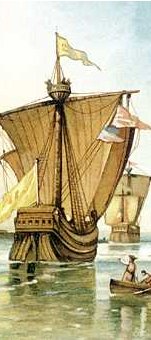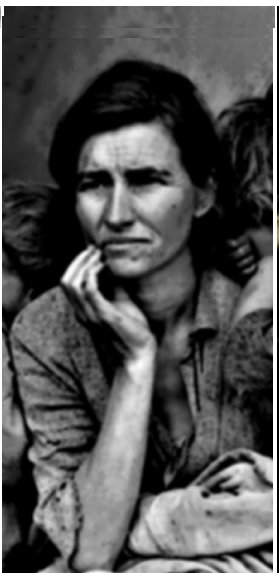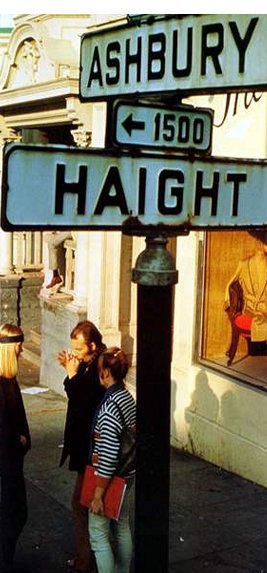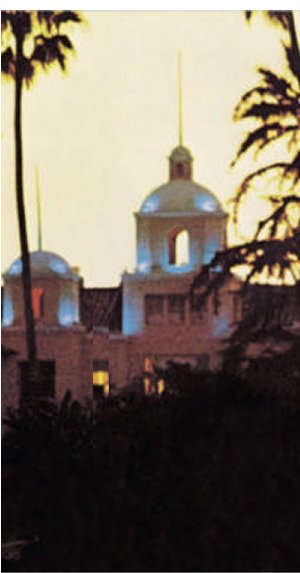The Steel Rush Marissa Potasiak
Marilyn S. Johnson is the History
Department Chair and a professor at Boston College, teaching courses on social
movements, working-class history, and the American West. She received
her bachelor degree in History at Stanford and her Ph.D. in History at New
York University.
She has written four other books and received the Sierra Prize from the Western
Association of Women Historians for The Second Gold
Rush.
Marilynn S. Johnson��s book, The
Second Gold Rush: Oakland and the East
Bay in World War II, provides an
in-depth account of the effects of World War II on the East
Bay region of California,
allowing her to uncover the human story of wartime migration and urban growth.
This detailed focus of a specific community reveals the amazing social and
cultural changes this region experienced �V changes Johnson sees as ��the most
enduring legacy of World War II.��1
Even
before the boom of World War II, Oakland
was a major city, topping San Francisco
as the East Bay��s
business, industrial, and financial center. But even though Oakland
and its nearby neighbor Richmond
housed factories from giants such as Standard Oil and General Motors, these
cities still maintained a quiet, small-town feel. During the war, old time
resident��s nostalgically remembered a place where ��different ethnic and racial
groups lived alongside on another�� in a ��fluid and tolerant social climate.��
This stable environment �V with a relatively small immigrant population �V is
what old-timers longed for during the war years, with their formerly homogenous
communities replaced with striking, and to them terrifying, diversity. After Pearl
Harbor, the government gave billions of dollars in federal
subsidies to industrialists like Henry Kaiser, creating an overnight defense
boom in the East Bay.
World War II was the gold rush of the twentieth century and ��unlike the earlier
boom...the federal government now played a key role in directing and
facilitating the flow of migration.��2 Shipbuilding
was the major industry, with 150,000 people working in East
Bay shipyards.3
The population of Oakland
increased by 500,000 people from 1940 to 1945, with the immigrant population up
67.3%. Most were out-of-state settlers from Texas,
Arkansas, Oklahoma,
and Louisiana. These
defense migrants �V eager for the high wages of Californian shipyards �V
contained majorities of women, young people, and African Americans.
These groups enjoyed economic opportunities unattainable in their home states,
but their presence also created new biases among former residents.
The war transformed both shipbuilding and
the treatment of shipyard labor. New building techniques such as
pre-fabrication (building the individual parts of a ship separately, before
assembly) transformed ��skilled trades into assembly-line production��, causing
anger among old-time workers and their unions at the de-skilling
of their jobs.4 The old-timers took out
their anger on the new migrant workers �V African Americans, women, and
southerners. Old-timers felt these migrants were undeserving of their new,
high-paying jobs and were frustrated with relative ease at which they moved up
into semi-skilled positions. But these groups could never advance to
supervisory positions, were placed in segregated workspaces, and were
constantly subjected to racial and sexual stereotypes; African Americans got
lower-paying, physically demanding jobs and women were often accused of
prostitution. Unions offered little help to these workers, so management
stepped in; Kaiser offered his workers ��corporate welfare�� �V healthcare
services, childcare, and leisure activities. Despite this help from management,
migrants faced their biggest obstacle finding housing. The private sector
proved unable to provide enough housing for the thousands of new war workers,
forcing thousands of migrants to share tiny houses with extended family, move
into decaying trailer parks, or simply sleep on the streets. When the federal
government finally stepped in, they ��introduced new forms of federally
sanctioned racial segregation�� creating ��shipyard ghettos�� that isolated
old-time residents from newcomers and African Americans from whites.5 This ��patchwork�� segregation cemented
post-war neighborhood settlement, creating lasting racial tensions. In total,
30,000 public housing units were built for 90,000 East
Bay workers, mass-produced houses
made from cheap materials, often placed in undesirable locations.
Migrants
relied heavily on family connections to adjust to their new lives. The family
was the main source of support because ��long hours, high turnover, and extreme
social diversity all served to hinder the growth of a common culture in war
housing areas.��6 Overcrowding, new roles
for women, and new power for youth caused these families extreme stress. Men
felt threatened by the loss of their position as breadwinner and feared marital
infidelity in the workplace �V both divorce and marriage rates increased during
World War II. Young people became more independent �V often making more money
than their parents �V causing a generational conflict between parents and
children. Although they all dealt with common problems, migrants couldn��t lean
on the migrant community for support because neighbors constantly moved and
migrants worked varied shifts. Neighbors never had a chance to get to know one
another. But there was a sense of geographical unity among some migrants,
especially southerners. They brought their evangelical religion and popularized
country and blues music �V both having a lasting impact on Californian culture.
Migrants also had a large impact on the cities they surrounded. These boomtowns
��provided new social opportunities and freedom...for the migrants, blacks, and
women who enjoyed new defense earnings��, a transformation that ��shocked the
sensibilities of the prewar middle class.��7
Retail businesses earned five times the amount they earned before the war, with
migrants buying previously unattainable consumer goods �V even fur coats were
within their reach. Old timers felt invaded by wealth-flaunting migrants, who
seem to bring with them street peddlers, gambling, prostitution, movie
theatres, and bars. Blaming the migrants for ��ruining�� their cities, city
governments targeted migrants for arrests, taxed theatres and jukeboxes,
allowed segregated stores, and controlled female access to bars, dancehalls,
and other public spaces. Migrants gained new economic freedoms but were subject
to persecution and injustice.
East
Bay city governments were dominated by conservative, business
elites before and during the war. However the war ��presented an opportunity to
challenge the political status quo�� and ��a coalition of labor, black, and other
progressive forces coalesced during the war and would become a major contender
in the...postwar era.��8 City governments
promised to enact a series of public works projects after the war, including
much needed road, sewer, school, and hospital repair. But these promises failed
to materialize and unemployment increased dramatically after the war �V
especially for women and African Americans. Additionally, the migrants didn��t
leave East Bay
cities �V as conservative city officials had hoped �V instead, more continued to
come. All these factors gave women, African Americans, labor, returning
veterans, and progressive forces an opportunity to change city politics, enacting
a general strike in 1946 and electing new board members to the city council.
This victory was short-lived however, as returning prosperity and the fear of
communism discredited this coalition. The most crucial issue of the postwar
years was public housing. Conservatives were eager to see public housing
destroyed, hoping to clean their cities of blight and squalor and attract
private investment. In the early 1950s, cities like Richmond
��evicted thousands of minority and low-income tenants, sowing the seeds of
racial discontent that would plague Richmond
and other East Bay
cities for decades.��9 Cities evicted
public housing tenants based on race and, in racist real estate market, forced
African Americans to move into already overcrowded black neighborhoods. The
lack of available, decent housing caused overwhelming frustration and anger in
the African American community; the issue was the underlying cause of the race
riots of the 1960s. Racist postwar housing policies created animosities that
forever changed the East Bay.
Throughout
her book, Johnson claims World War II was a second gold rush for the East Bay,
not only economically, but also in the social diversity it brought to the
region. The Bay Area was the nation��s number one shipbuilding center, with over
5 billion dollars in federal contracts.10 The shipyards�� high wages �V the highest of any shipyard
center in the country �V created overnight boomtowns, just as the gold rush had
in 1849. And like the earlier gold rush, the population drew dramatically. In a
region where immigrants were previously ethnic whites �V Italians, Irishmen,
Germans, and Scandinavians �V the East
Bay now had a much larger
population of African Americans and southerners. Migrants infused the region
with women and young people, reversing the previous majority of older men.
World War II boomtowns were just as energetic as those in the gold rush, with
their bars, movie theatres, and crowded shopping centers. Like gold miners who
struck it rich, defense workers seemed to have more money they than knew what
to do with, creating a jovial and some what reckless environment. Servicemen
waiting for assignment further energized the boomtowns; knowing they may not
come home alive, their only focus was to have fun. Just as important to Johnson��s
thesis are the larger racial effects of the war. She argues early federal
segregation of migrant housing forever changed the East Bay; minorities were
isolated in sub-standard conditions, creating divisions and biases that would
remain for decades. African Americans replaced Asians, the group that had been
abused in the first gold rush, as the source of racial prejudice amongst East
Bay residents. Decades of injustice, especially in housing, ��finally exploded
in the mid-1960s�� when ��black rioters responded not only to immediate civil
rights issues but to a long history of racial oppression.��11
In many ways, World War II was a twentieth century gold rush for the East
Bay.
Johnson
reveals herself several times in her book as liberal-leaning historian, focusing
on women and minorities in the tradition of New Left historiography. Published
in 1993, in
Berkeley and Los Angeles, California, The Second Gold Rush was published with
the help of a university known for being liberal. In fact, the region she covers
in the book is today one of the most liberal areas of the country and the
progressive-minded climate must have had some influence on her writing. But
it��s the subjects of her book that show her to be a New Left historian. Writers
who grew up in the sixties were confronted with the issues of race and poverty
and New Left historians focused on the common person��s experience to understand
how society became this way. A majority of Johnson��s book deals with the life
of the common person, only a few times mentioning specific names and prominent
people. Her main focus on migrants, minorities, and women reflect the New Left
emphasis on pluralism. Johnson also unfavorably depicts the conservative
business leaders who ran East Bay
cities, saying ��conservative rule�� resulted in the ��callous treatment of black migrants.��12 And unlike conservatives who
dislike government interference on a local level, Johnson takes no issue with
federal involvement during World War II; she just takes issue with the racial
segregation they employed. Overall, Johnson��s emphasis on everyday life, her
unfavorable judgments of conservatives, and her focus on women and African
Americans make her book a New Left history of Oakland and the East Bay in World
War II.
Literary
criticisms of The Second Gold Rush are generally favorable �V praising Johnson��s
focus on the ��human dimension�� of wartime migration and her varied sources. University
of California Press commends
Johnson for her ��wide-ranging�� sources that ��include shipyard records, labor histories,
police reports, and interviews.��13 These
diverse sources allow Johnson to show the effects of the war years from many
different points of view, as well as providing evidence to support her thesis.
A review in the history periodical Choice also praises the book��s many
photographs, maps, and tables that give an unaltered sense of life in World War
II. Choice reviewer D.F. Anderson believes ��Johnson
provides as excellent case study of the ��human dimension�� of wartime western
urban America�� �V a dimension that is often lost in larger, more general studies.14 The major criticism of Johnson��s work
is she ��tends to overstate the discontinuity between wartime and prewar
society��, meaning she doesn��t address the connection between prewar economic
and social forces and what happened during the war as well as she needed to.15 But as a whole, The Second Gold Rush is
��recommended for all college and university collections�� for it��s multi-layered
analysis of the unrecognized masses of World War II migration.16
Johnson
effectively proves her thesis that World War II was a second gold rush for the
East Bay and adeptly explains the complex racial, social, and cultural elements
of East Bay society. But it��s Johnson��s analysis of the data from this period
that really makes this book meaningful. Often showing the hidden meaning behind
the statistics, Johnson shows how city officials and old-timers manipulated
information for their own use. For example, in 1943 officials in Oakland
and Richmond declared a ��Crime
Wave�� caused by the new, immoral migrants.17
Police records do in fact show a rise in crime but this is only part of the
story. Johnson explains that these numbers went up for many reasons: the
population increased, the numbers of young, at risk men increased, and police
made more arrests, targeting migrants for minor offenses such as vagrancy. In
fact, the number of murders actually dropped during the war years, showing
violent crime had not increased. Johnson shows that city officials used the
fear of a ��Crime Wave�� as an excuse to control migrants and to convince the
federal government to grant them more funds. Throughout the book, Johnson
provides impressive analysis showing the complexities of migrant, old-timer
relations. It��s this analytical skill that makes A Second Gold Rush a
worthwhile read.
Johnson
also shows how the events in East Bay related to the rest of the country.
Cities along the west coast like Oakland
and Richmond ��grew at the expense
of those in the Northeast.��18 Small towns
across the country disappeared as people who had long suffered during the
depression went west for jobs. California was deeply influenced by the cultures
these migrants brought with them, from evangelical religion to blues music. The
actions of the government in Washington D.C. also had an enormous impact on the
East Bay. After the United States entered the war, the federal government gave
billions of dollars in contracts to East Bay shipyards, transforming the
economy overnight. The federal government also helped encourage migration from
the rest of the country to California, making them the source for much of the
East Bay��s new diversity. Just like the rest of the country, the East Bay
citizens dealt with the stresses of wartime life �V rationing, women in the
workplace, and war-related deaths. The East Bay experienced World War II along
with the rest of the country, but they were affected in some distinctive ways.
Everything
that happened in the East Bay,
and California in general, was on
a larger, more dramatic scale. Hundreds of thousands of people migrated to ��one
of the nation��s largest shipbuilding centers��19
to earn the highest wages offered in the country. Californian defense
industries produced a majority of the nation��s naval ships and aircraft and
served as the launching point for the war in the Pacific. California arguably
became the most diverse state in the country, with African Americans and
southerners mixed with California��s existing minorities. This mix provided a
window into American racial conflicts and showed how easily prejudices can rip
apart a region. The war firmly established California as central to America��s
economy and the racial conflicts that resulted showed the desperate need for
America to destroy its racial divides.
In
conclusion, Johnson��s account of the effects of World War II on the East Bay
goes where few World War II histories have gone �V into the complex, chaotic
lives of defense migrant workers. They had a lasting effect on the region,
creating thriving boomtowns, ��transforming social relations and cultural life��,
and enduring the wrath of long-time residents unwilling to change.20
The people who built the ships that helped win the war uncovered the deep
biases Americans held against outsiders, biases that would take decades to
eradicate.
1. 25-26; Johnson, Marilynn S. The Second Gold Rush: Oakland
and the East Bay
in World War II. Berkeley and Los
Angeles: University
of California Press, 1993 2.
2. Johnson, Marilynn S. 25-26.
3. Johnson, Marilynn S. 30.
4. Johnson, Marilynn S. 33.
5. Johnson, Marilynn S. 33, 41.
6. Johnson, Marilynn S. 60-61.
7. Johnson, Marilynn S. 83.
8. Johnson, Marilynn S. 114.
9. Johnson, Marilynn S. 143.
10. Johnson, Marilynn S. 185.
11. Johnson, Marilynn S. 209.
12. Johnson, Marilynn S. 32.
13. Johnson, Marilynn S. 232.
14. Johnson, Marilynn S. 233.
15. University of California Press. Preface. The Second Gold Rush: Oakland
and the East Bay
in World War II. Berkeley and Los
Angeles: University
of California Press, 1993.
16. Anderson, D.F. ��Social & Behavioral Sciences / History, Geography
& Area Studies / North America�� Choice Jan. 1987.
Jul. 1994. May 29, 2008.
<http://www.cro2.org/default.aspx?page=reviewdisplay&pid=1911792>
17. Anderson, D.F. <http://www.cro2.org/default.aspx?page=reviewdisplay&pid=1911792>
18. Anderson, D.F.
19. Johnson, Marilynn S. 153.
20. Johnson, Marilynn S. 3.
21. Johnson, Marilynn S. 4.
22. Johnson, Marilynn S. 2.










